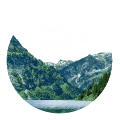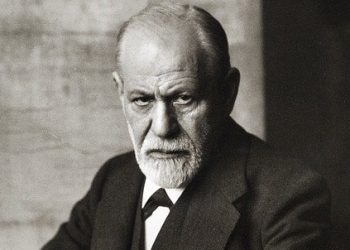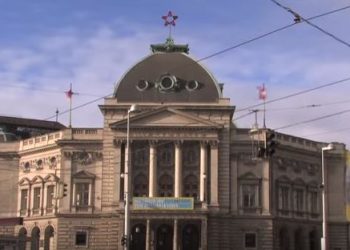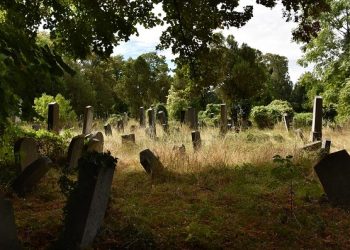In this article, we have gathered all the information about the various museums of the city of Vienna.
- The Main Branch of the Wien Museum at Karlsplatz
- Prater Amusement Park Museum
- Otto Wagner Pavilion at Karlsplatz
- Otto Wagner’s Hofpavillon at Hietzing Station
- Clock Museum
- Beethoven Museum
- Eroica House – Beethoven’s Summer Retreat
- Pasqualati House – Beethoven’s Apartment
- Haydn House (Haydnhaus)
- Schubert’s Birthplace
- The Apartment Where Schubert Died
- Johann Strauss’s Apartment
- Archaeological Site at Michaelerplatz
- Virgilkapelle (Virgil Chapel) near St. Stephen’s Cathedral
- Roman Museum
- Roman Ruins near the Fire Department Headquarters
- Neidhart Frescoes
- MUSA Museum
- MUSA Gallery
- Hermesvilla in the Lainzer Tiergarten Nature Reserve
Detailed Information on the Museums
1. The Main Branch of the Wien Museum at Karlsplatz
This museum is dedicated to the history of the city of Vienna. Its permanent exhibition includes collections from the various historical periods in which there was an active settlement in the city area. The collections display artifacts from the Neolithic period to the mid-20th century. The focus of the exhibition is mainly the 19th century, and as part of the exhibits related to this period, there are also paintings and works of art by the famous Gustav Klimt and Egon Schiele. The museum underwent a long renovation and reopened in 2024. The renovated museum is modern and pleasant.
Watch a summary video about the museum:
Opening Hours:
Open every day (except Mondays) from 10:00 AM to 6:00 PM.
Prices:
Free admission.
You can buy a combined ticket for the Wien Museum branch dealing with the life and work of Otto Wagner, which is also located at Karlsplatz. The ticket costs €10 for an adult.
Address: Karlsplatz 8
Map:
2. Prater Amusement Park Museum
The Prater Amusement Park Museum is located in the Planetarium building in the park and tells the story of the park’s development and growth from its early days to the present. Among the museum’s collections, you can see a variety of ancient items such as pictures and paintings, figures that were on old carousels, a fortune-telling machine, the old ghost train, and many other special exhibits.
This is what the museum looks like:
Essential Information for Visiting the Museum
Opening Hours:
- Tuesday – Sunday: 11:00 AM to 6:00 PM
- Closed on Mondays, January 1st, and December 25th.
Prices:
- Adult: €8.
- Seniors and Students (up to age 27): €6.
- Children up to age 19: Free.
Free admission on the first Sunday of every month. Free guided tours for museum visitors.
Address: Planetarium building next to the Giant Ferris Wheel. Oswald-Thomas-Platz 1
Map:
You can read comprehensive information about the Prater amusement park and all its other attractions.
3. Otto Wagner Pavilion at Karlsplatz
This museum presents the life and work of the famous and influential architect Otto Wagner. The museum is located near Karlsplatz in a wonderful train station building designed and built by Wagner himself in 1898. The building was designed in the Art Nouveau style and to this day is considered an architectural gem in Vienna’s urban landscape. In the museum, you can see documents, pictures, and a wealth of information about the architect and the buildings he designed throughout Vienna.
This is the museum building:
Essential Information for Visiting the Museum
Opening Hours:
- Friday – Sunday: 10:00 AM to 1:00 PM, 2:00 PM to 5:00 PM
- Closed from November to March.
Prices:
- Adult: €5.
- Seniors and Students (up to age 27): €4.
- Children up to age 19: Free.
Free admission on the first Sunday of every month.
Address: Karlsplatz, 1040
How to get there?
The best way is to get to the Karlsplatz subway station using lines U1 (red line), U2 (purple line), and U4 (green line).
Map:
4. Otto Wagner’s Hofpavillon at Hietzing Station
The project of building the railway lines in Vienna was the city’s largest project at the beginning of the 20th century. Otto Wagner was commissioned to design several train stations throughout the city that have been preserved to this day. At the Hietzing station, Otto Wagner built an impressive and beautifully designed building dedicated to Emperor Franz Joseph and his family (due to its proximity to Schönbrunn Palace). Although the emperor used this station only twice, it has remained a symbol of the innovation and unique design of the gifted architect. Today, the station serves as an exhibition illustrating the artistic world of Otto Wagner.
Get a glimpse of the station building:
Essential Information for Visiting
Opening Hours:
- Friday to Sunday from 10:00 AM to 1:00 PM and from 2:00 PM to 5:00 PM
- Closed from November to March. Closed on May 1st.
Prices:
- Adult: €5.
- Seniors and Students (up to age 27): €4.
- Children up to age 19: Free.
Free admission on the first Sunday of every month.
Address: Schönbrunner Schloßstraße, 1130 Vienna
How to get there?
The station designed by Otto Wagner is located near the Hietzing subway station. It can be easily reached using the green subway line (U4). Get off at Hietzing station and walk for about 5 minutes.
Map:
5. Clock Museum (Uhrenmuseum)
The Clock Museum (in German: Uhrenmuseum) is located in the heart of the old city, in the first district. The museum is housed in a very old Viennese building called Harfenhaus. The museum, which opened to visitors in 1921, includes one of the largest and most unique clock collections in Europe, with 4,000 items, of which about 900 clocks from all over Europe are displayed. The museum’s collection is actually a combination of two private collections: that of Rudolf Kaftan, a high school teacher and the museum’s first director, and that of the writer Marie von Ebner-Eschenbach, who mainly collected pocket watches.
You can learn more about the museum in the following video:
Essential Information for Visiting the Museum
Opening Hours:
- Tuesday – Sunday: 9:00 AM to 5:00 PM
- National Holidays: 10:00 AM to 5:00 PM.
- The museum is closed on: 1.1, 1.5, 25.12
Costs:
- Adult: €8.
- Reduced price (student, senior, disabled): €6.
- Child up to age 19: Free admission.
- First Sunday of the month – free admission to the museum.
Address: Schulhof 2, 1010 Wien
How to get to the Clock Museum?
Although the museum is located right in the heart of the old city, it can still be easily reached by public transport.
- Subway: The orange line U3 stops at the Herrengasse station in the old city. From there, it is about a 5-minute walk to the museum.
- Bus: Bus line 3A reaches the Hoher Markt station (near the Bermuda Triangle and Schwedenplatz). From there, it is about a 4-minute walk to the museum entrance.
Map:
6. Beethoven Museum
The life and work of Ludwig van Beethoven are intertwined with the city of Vienna. In 1787, the composer first came to Vienna to study with Mozart. From 1792, he lived in the city permanently. The Beethoven Museum is entirely dedicated to describing the life and work of the great composer.
The place where the museum is located is directly related to Beethoven because it was where he tried to cure, or at least improve, his hearing. The museum is located in the 19th district of Vienna, Heiligenstadt, which was once a separate area outside Vienna with thermal springs with healing properties. While trying to heal himself, Beethoven stayed in an apartment in this area and continued to create wonderful works.
This is what the museum looks like:
Essential Information for Visiting the Beethoven Museum
Opening Hours:
- Tuesday to Sunday from 10:00 AM to 1:00 PM and from 2:00 PM to 5:00 PM.
- Closed on: 1.1, 1.5, 25.12.
- On any national holiday that falls on a Monday, the museum is closed.
Prices:
- Adult: €8.
- Seniors and Students (up to age 27): €6.
- Children up to age 19: Free.
Address: Probusgasse 6
How to get to the Beethoven Museum?
You can reach the Beethoven Museum by subway. The green line (U4) goes to the Heiligenstadt station, and from there, you need to take bus line 38A towards Kahlenberg. Get off at the Armbrustergasse stop and from there walk about 2 minutes to the museum.
Map:
7. Eroica House – Beethoven’s Summer Retreat
In this house, Beethoven used to spend the summer months, and it was here that he composed his famous symphony called Eroica. The exhibits in this house show the area as it was in Beethoven’s day – a rural area on the outskirts of the city.
The museum is currently closed until further notice.
Address: Döblinger Hauptstraße 92
Map:
8. Pasqualati House (Pasqualatihaus) – Beethoven’s Apartment
This building is named after its owner, Josef Benedikt Baron Pasqualati, and was built in the 18th century in the first district of Vienna. Beethoven lived for about eight years in an apartment in this building. It was here that he composed his 4th, 5th, 7th, and 8th symphonies, as well as his famous opera Fidelio. The house displays various documents from Beethoven’s life and work, and it also features the famous portrait of Beethoven from 1805.
Essential Information for Visiting the Museum
Opening Hours:
- Tuesday to Sunday from 10:00 AM to 1:00 PM and from 2:00 PM to 5:00 PM.
- Closed on: 1.1, 1.5, 25.12.
Prices:
- Adult: €5.
- Seniors and Students (up to age 27): €4.
- Children up to age 19: Free.
- Free admission on the first Sunday of the month.
Address: Mölker Bastei 8
How to get to Beethoven’s apartment?
You can reach this building from the Schottentor subway station. The purple line (U2) stops at this station, as do several tram lines – 1, 71, D, 37, 38, 40, 41, 42, 43, 44. From the station, it is about a 4-minute walk.
Map:
9. Haydn House (Haydnhaus)
The great composer Joseph Haydn lived in this house for 12 years and died here in 1809. Today, there is an exhibition on his life and work, focusing mainly on his last years as a composer when he was already one of the most famous and beloved composers in Europe.
As a preliminary exhibition, on the ground floor of the house, you can see various paintings of London and Vienna from around 1800, as well as paintings of the important people who came to visit Haydn at his home.
In this house, the composer created his last works – “The Creation” and “The Seasons” – while his health was declining. In his bedroom, he hung several of his works, and today you can see this alongside medals, certificates, and gifts that Haydn received in his last years. You can also see several antique musical instruments that he owned.
In addition to the exhibition in the house, you can go out and enjoy the small, well-kept garden where Haydn spent his time among the fruit trees. The garden has been restored and designed in the style that was common in 1800.
You can see what the house and museum look like in this video:
Essential Information for Visiting Haydn’s House
Opening Hours:
- Saturday and Sunday from 10:00 AM to 1:00 PM and from 2:00 PM to 6:00 PM.
- Closed on 1.5, 24.12, 25.12, 31.12, 1.1.
- On any national holiday that falls on a Monday, the museum is closed.
Prices:
- Adult: €5.
- Seniors and Students (up to age 27): €4.
- Children up to age 19: Free.
- Free admission on the first Sunday of the month.
Address: Haydngasse 19
How to get there?
Haydn’s house is a short walk from Vienna’s main shopping street – Mariahilfer Strasse. The best way to get there is to take the U3 subway (orange line) and get off at Zieglergasse station. From there, you will have to walk for about 8 minutes through the side streets. The house is not far from the Austria Trend Hotel.
Map:
10. Schubert’s Birthplace (Schubert Geburtshaus)
This building is where the famous composer Franz Schubert was born in 1797. In the past, the house was called “The Red Crab” and was then in the suburbs of Vienna. Schubert spent 4.5 years of his life in this place.
Today, part of the place is used for displaying documents, objects, and paintings related to his life. The exhibit that attracts many visitors is the pair of glasses that belonged to the composer.
This building also has rooms commemorating the Austrian writer Adalbert Stifter, who was also a talented painter. His paintings are displayed here.
You can see what the place looks like in this video:
Essential Information for Visiting Schubert’s House
Opening Hours:
- Friday to Sunday from 10:00 AM to 1:00 PM and from 2:00 PM to 5:00 PM.
- Closed on: 1.1, 1.5, 25.12.
Prices:
- Adult: €5.
- Seniors and Students (up to age 27): €4.
- Children up to age 19: Free.
- Free admission on the first Sunday of the month.
Address: Nußdorfer Straße 54
How to get to Schubert’s House?
You can reach this building from the Schottentor subway station. Take one of the tram lines 37 or 38. Get off at the Canisiusgasse stop. From the stop, it is about a 2-minute walk to the museum.
Map:
11. The Apartment Where Schubert Died (Schubert Sterbewohnung)
Schubert lived in this apartment for the last few weeks of his life. It was his brother’s apartment, and he stayed there until his last day. In this apartment, he created his last works, including “The Shepherd on the Rock”. There is an exhibition of documents related to the composer’s death.
Essential Information for Visiting
Opening Hours:
- Friday to Sunday from 10:00 AM to 1:00 PM and from 2:00 PM to 5:00 PM.
- Closed on: 1.1, 1.5, 25.12.
- On 24.12 and 31.12 open from 10:00 AM to 1:00 PM.
Prices:
- Adult: €5.
- Seniors and Students (up to age 27): €4.
- Children up to age 19: Free.
- Free admission on the first Sunday of the month.
Address: Kettenbrückengasse 6
How to get there?
You can reach this building from the Kettenbrückengasse subway station. Take the green line (U4) and get off at the Kettenbrückengasse station, which is about 2 stops from Karlsplatz. From the station, it is about a 4-minute walk to the museum.
Map:
12. Johann Strauss’s Apartment
In this apartment, Johann Strauss composed the famous waltz “The Blue Danube” in 1867. Strauss lived here for 7 years. During that time, the street was considered a fashionable and beautiful Viennese place (less so today).
The apartment has an exhibition on his life and work. The exhibition includes musical instruments, furniture, paintings, and various documents that describe his world and life in depth.
This is what the museum looks like:
Essential Information for Visiting Johann Strauss’s House
Opening Hours:
- Tuesday to Sunday from 10:00 AM to 1:00 PM and from 2:00 PM to 5:00 PM.
- Closed on: 1.1, 1.5, 25.12.
Prices:
- Adult: €5.
- Seniors and Students (up to age 27): €4.
- Children up to age 19: Free.
- Free admission on the first Sunday of the month.
Address: Praterstraße 54
How to get to the Johann Strauss Museum?
The museum is located in the second district, near a variety of Jewish places from the past and present. The best way to get to the museum is by taking the U1 subway (red line) to the Nestroyplatz station. From there, it is about a 5-minute walk.
Map:
13. Archaeological Site at Michaelerplatz
In the center of Michaelerplatz, just before entering the gates towards the Hofburg Palace or getting on an old-fashioned carriage for a city tour, it is worth stopping to look at the antiquities on display. The complex, which is open to the public for free, displays ancient remains of the city of Vienna. You can see Roman streets as well as wall remains and foundations of buildings from past centuries. On the side of the impressive square is also the Loos House, which once belonged to a prosperous Jewish business. You can read more about the Jewish places of Vienna.
Address: Michaelerplatz
Admission: Open day and night and there is no charge.
Map:
14. Virgilkapelle (Virgil Chapel) near St. Stephen’s Cathedral
This is an ancient burial and prayer room that was discovered in 1973 during the construction of the Stephansplatz station, which is located right under St. Stephen’s Square. The impressive underground room that was discovered is about 12 meters below the square. The Gothic design of this space is one of the few in Vienna that has been so well preserved, and you can clearly see various elements from the Middle Ages.
In fact, the history of the place is not entirely clear. Researchers estimate that the burial chamber was established in the 13th century when Duke Frederick of the House of Babenberg was in power. At that time, there was a cemetery in the area where the cathedral is located. Burials in the cathedral area continued for several hundred years until they were stopped in the 18th century. It is possible that the cessation of burials in the place led to the covering of the burial chamber with stones since it was no longer in use.
You can see the burial chamber in the following video:
Essential Information for Visiting the Burial Chamber
Opening Hours:
- Friday to Sunday from 10:00 AM to 5:00 PM.
- Closed on: 1.1, 1.5, 25.12.
Costs:
- Adult: €8.
- Student, Senior: €6.
- Children and teenagers up to age 19: Free admission.
- Free audio guide.
- Free admission on the first Sunday of every month.
How to get there?
You can enter the museum directly from the Stephansplatz subway station. The U1 (red line) and U3 (orange line) train lines stop there.
Map:
15. Roman Museum
In the area where Schwedenplatz and the Bermuda Triangle are today, there was a large Roman camp called Vindobona about 2000 years ago. The camp was established to protect the northern border of the empire, and Roman soldiers remained in the Vienna area for about 350 years.
Archaeological excavations that began in the 19th century revealed very interesting findings from the period when the soldiers of the Roman legion and also subjects from all corners of the empire lived in the Vienna area, and they are now displayed in the Roman History Museum. The exhibition has 300 items describing this period, as well as simulations and animations that help to understand the events in the Roman camp and its surroundings. Among the most important exhibits are the remains of two ancient houses from the Roman camp.
The exhibition currently in the museum focuses not only on the military camp but also beyond it, on the settlements that were established around it and supported its existence.
The exhibits in the Roman History Museum:
Essential Information for Visiting the Roman Museum
Opening Hours:
- Tuesday – Friday from 9:00 AM to 5:00 PM.
- Saturday and Sunday from 10:00 AM to 5:00 PM.
- The museum is closed on: 1.1, 1.5, 25.12.
Costs:
- Adult: €8.
- Reduced price (student, senior, disabled): €6.
- Child up to age 19: Free admission.
- Free admission on the first Sunday of every month.
Address: Hoher Markt 3, 1010 Wien
How to get to the Roman Museum?
The museum is located in the Hoher Markt (Upper Market Square). This is a beautiful and interesting place in itself, where you can see the historic Anker Clock and the Wedding Fountain. The square can be easily reached by public transport:
- Bus: Bus line 3A reaches the Hoher Markt station (near the Bermuda Triangle and Schwedenplatz). From there, it is a two-minute walk to the museum entrance.
- Subway: You can also take the subway to Schwedenplatz station (U4 – the green line) and then walk through the ancient streets. The walk takes about 10 minutes.
Map:
16. Roman Ruins near the Fire Department Headquarters
In the cellars of the Vienna Fire Department station, there are remains of an ancient drainage system that was in use between the 1st and 5th centuries AD during the activity of the Roman camp Vindobona.
Due to renovation work, the site is closed until further notice.
Address: Am Hof, Fire Station
Map:
17. Neidhart Frescoes
This place was a ballroom in the Middle Ages. There are very ancient wall paintings depicting the life of the singer Neidhart von Reuental between the years 1180 and 1240. These paintings are very rare because they do not depict any religious events at all.
This is what the ancient wall paintings look like:
Essential Information for Visiting
Opening Hours:
- Friday to Sunday from 10:00 AM to 1:00 PM, and from 2:00 PM to 5:00 PM.
- Closed on: 1.1, 1.5, 25.12.
Costs:
- Adult: €5.
- Student, Senior: €4.
- Children and teenagers up to age 19: Free admission.
- Audio guide: Free.
- Free admission on the first Sunday of every month!
Address: Tuchlauben 19
How to get there?
- Bus: Bus line 3A reaches the Hoher Markt station (near the Bermuda Triangle and Schwedenplatz). From there, it is a two-minute walk to the museum entrance.
- Subway: You can also take the subway to Stephansplatz station (U1 – red line or U3 orange line) and then walk through the ancient streets. The walk takes about 5 minutes.
Map:
18. MUSA Museum
This museum displays diverse modern art. The museum’s collection is the largest of its kind in Austria, with 40,000 works of art by 4,500 artists. The museum has a large exhibition area where a variety of artworks from the museum’s collections are displayed.
Essential Information for Visiting
Opening Hours:
- The museum is open Tuesday to Sunday from 10:00 AM to 6:00 PM.
- Closed on Mondays and on: 1.1, 1.5, 25.12.
Costs:
Admission to the museum is free.
Address: Felderstraße 6-8
How to get to the MUSA Museum?
The museum is located in a very central location, between the old University of Vienna and the City Hall. It is best to take the subway to Schottentor station and from there walk for about 5 minutes. The U2 subway (purple line) stops at Schottentor station, as well as a large number of tram lines: 1, 71, D, 37, 38, 41, 42.
Map:
19. MUSA Gallery
This gallery supports young artists and offers graduates of the various universities in the city a place to exhibit their work. In this way, the artists gain experience in exhibitions and can promote themselves in the field. The selection of the works to be displayed is done by a panel of experts.
Free admission.
The museum is open Tuesday to Sunday from 10:00 AM to 6:00 PM. Closed on Mondays and holidays.
Address: Felderstraße 6-8
How to get to the gallery?
The gallery is located in the same complex as the MUSA Museum mentioned in the section above. You can find the detailed directions there.
Art Library
This place is not a museum or anything of the sort, but a great idea for Vienna residents who love art. Here you can “borrow” for a nominal fee works of art by living artists to hang in your home for about a year. The library’s collection changes and has around 1900 works.
Address: Felderstraße 6-8
The museum is open Tuesday to Sunday from 10:00 AM to 6:00 PM. Closed on Mondays and holidays.
How to get there?
The gallery is located in the same complex as the MUSA Museum mentioned in the section above. You can find the detailed directions there.
Map:
20. Hermesvilla in the Lainzer Tiergarten Nature Reserve
In the heart of the wild nature reserve of Lainz, a stunningly beautiful villa is hidden, which Sisi called the “Palace of Dreams.” Emperor Franz Joseph gave the villa to his wife Sisi as a gift to convince her not to travel around the empire but to stay more in Vienna. The construction of the villa took 5 years and was completed in 1886. The villa was designed by the famous architect Karl von Hasenauer. The villa got its name from the statue of Hermes the Guardian that stands in its garden.
Inside the villa, there is a museum that tells about the lives of the emperor and his wife Sisi. The museum’s exhibition includes photographs, documents, original furniture, and personal items that belonged to the emperor and his wife. You can also see the royal bedroom of Sisi in the villa – it is an awe-inspiring and breathtaking room!
Famous artists such as Franz Matsch, Hugo Charlemont, and Gustav Klimt were responsible for the interior design of the villa and made it a place of spectacular beauty.
Many couples come to the area to take their pre-wedding photos.
Watch a short video about the villa:
Essential Information for Visiting the Museum in the Villa
Opening Hours:
- Tuesday to Sunday: 10:00 AM to 5:00 PM
- Closed from November to March, and on 1.5.
Costs:
- Adult: €8.
- Student, Senior: €6.
- Children up to age 19: Free.
- Free admission on the first Sunday of every month.
Map:


















